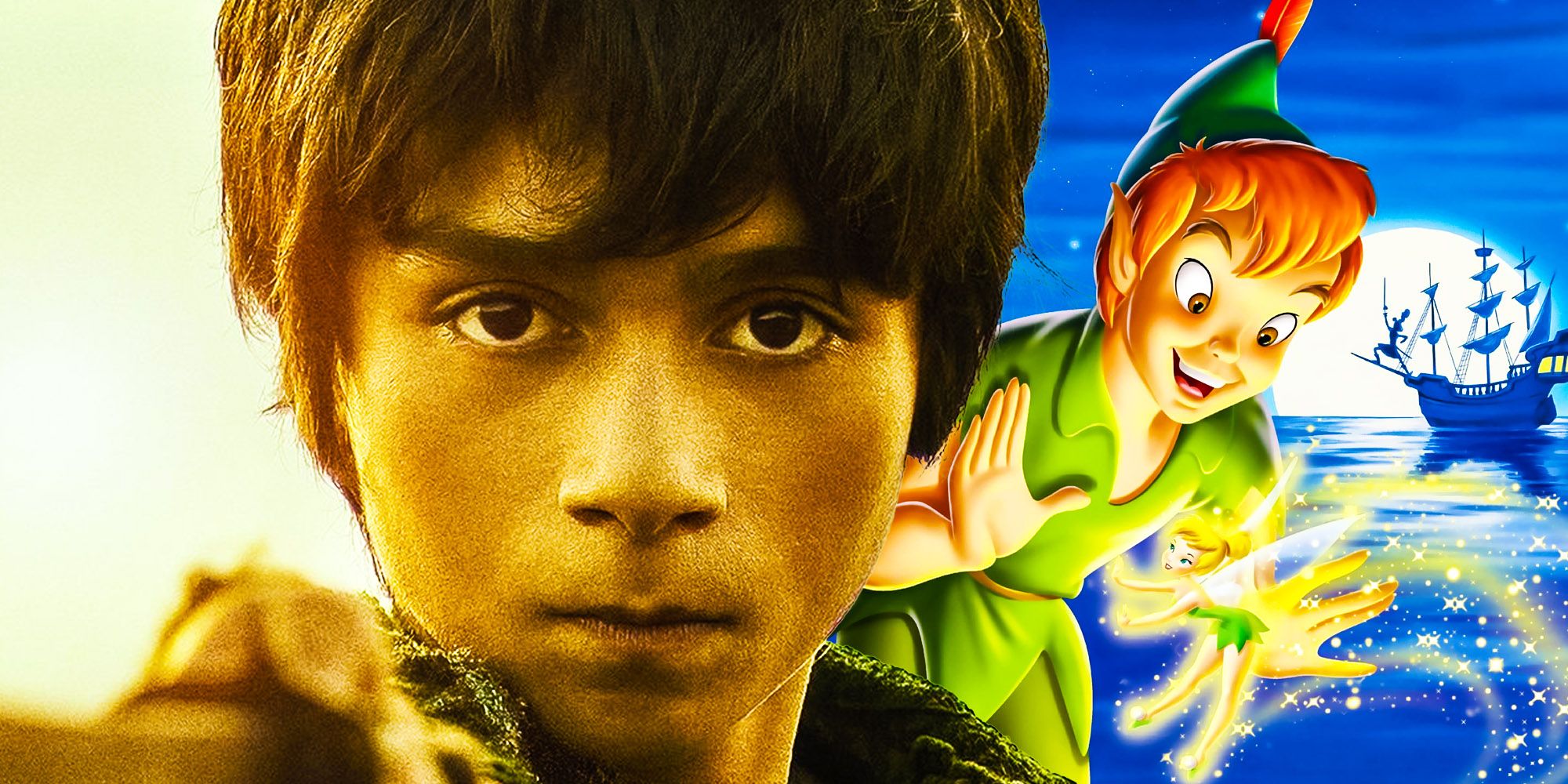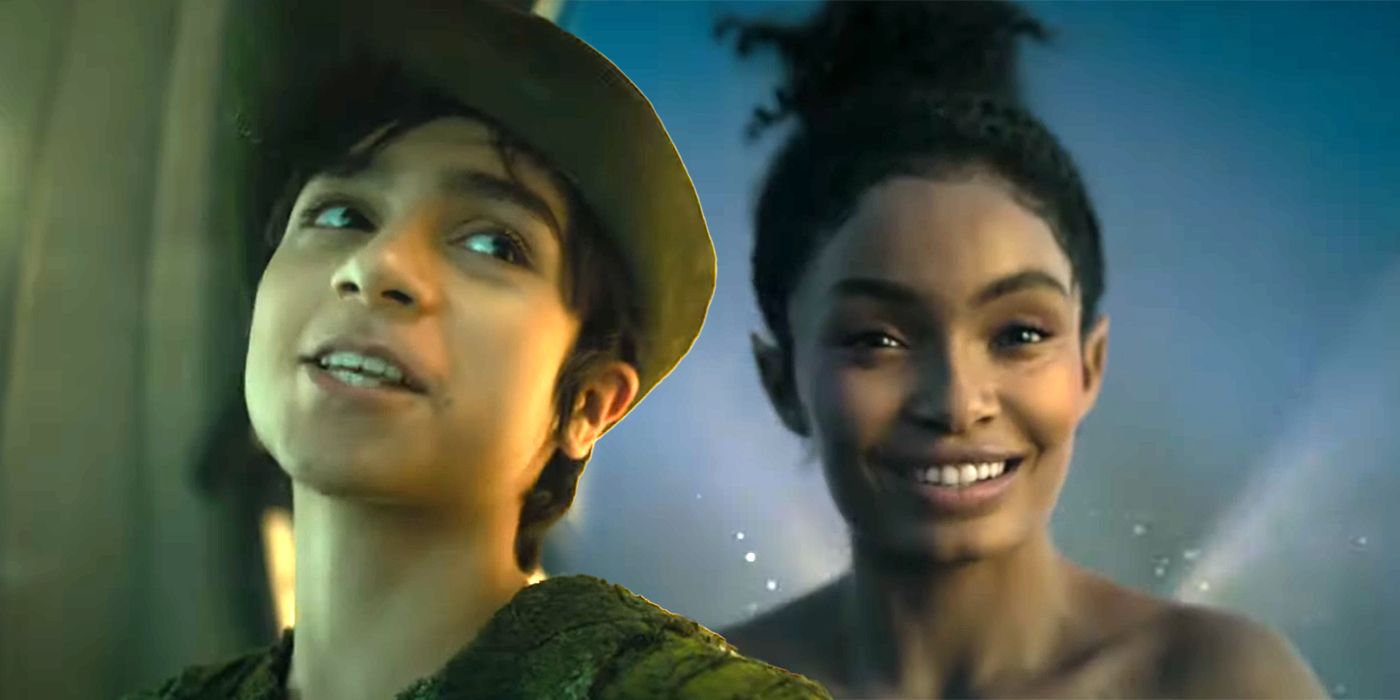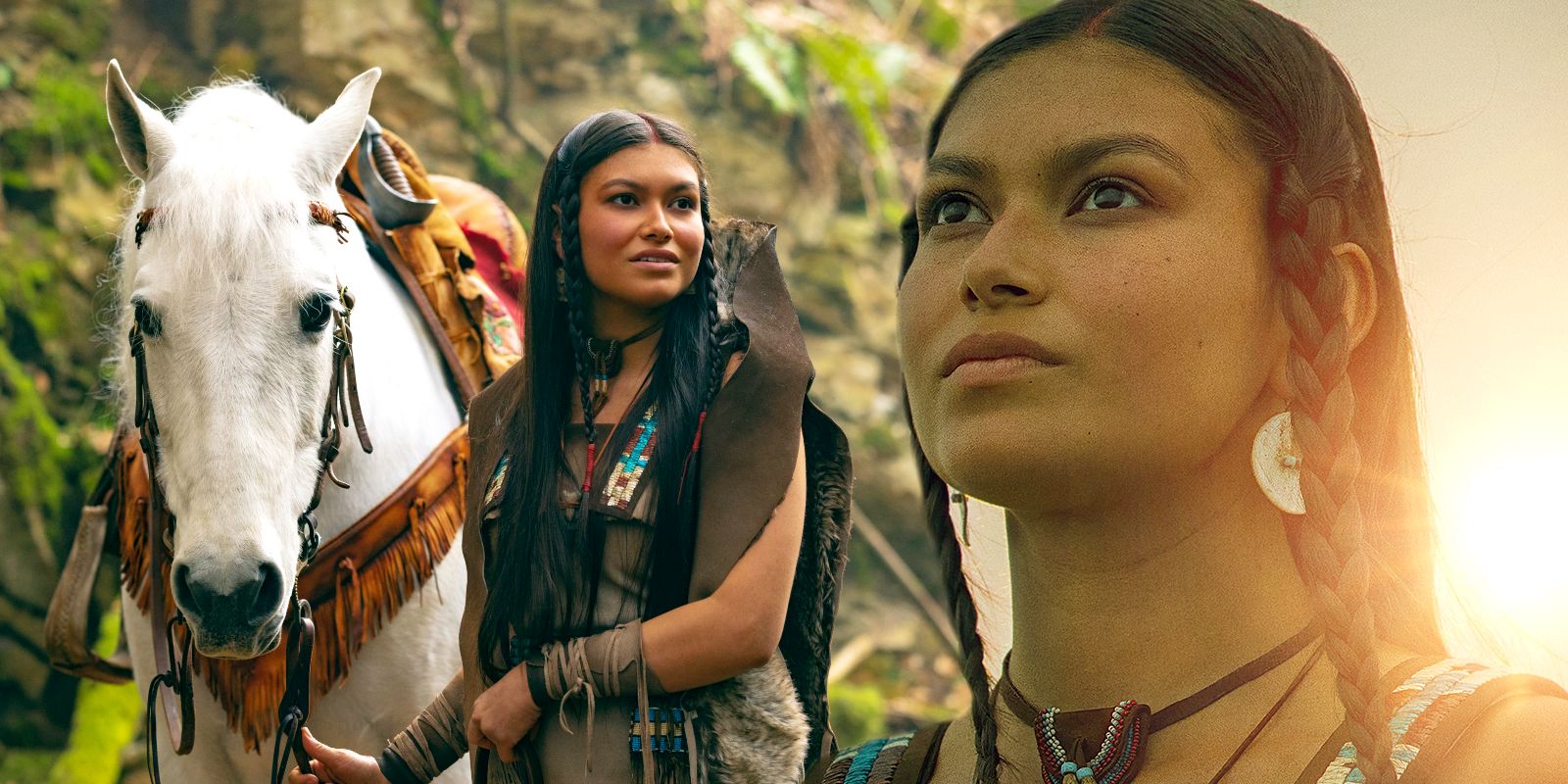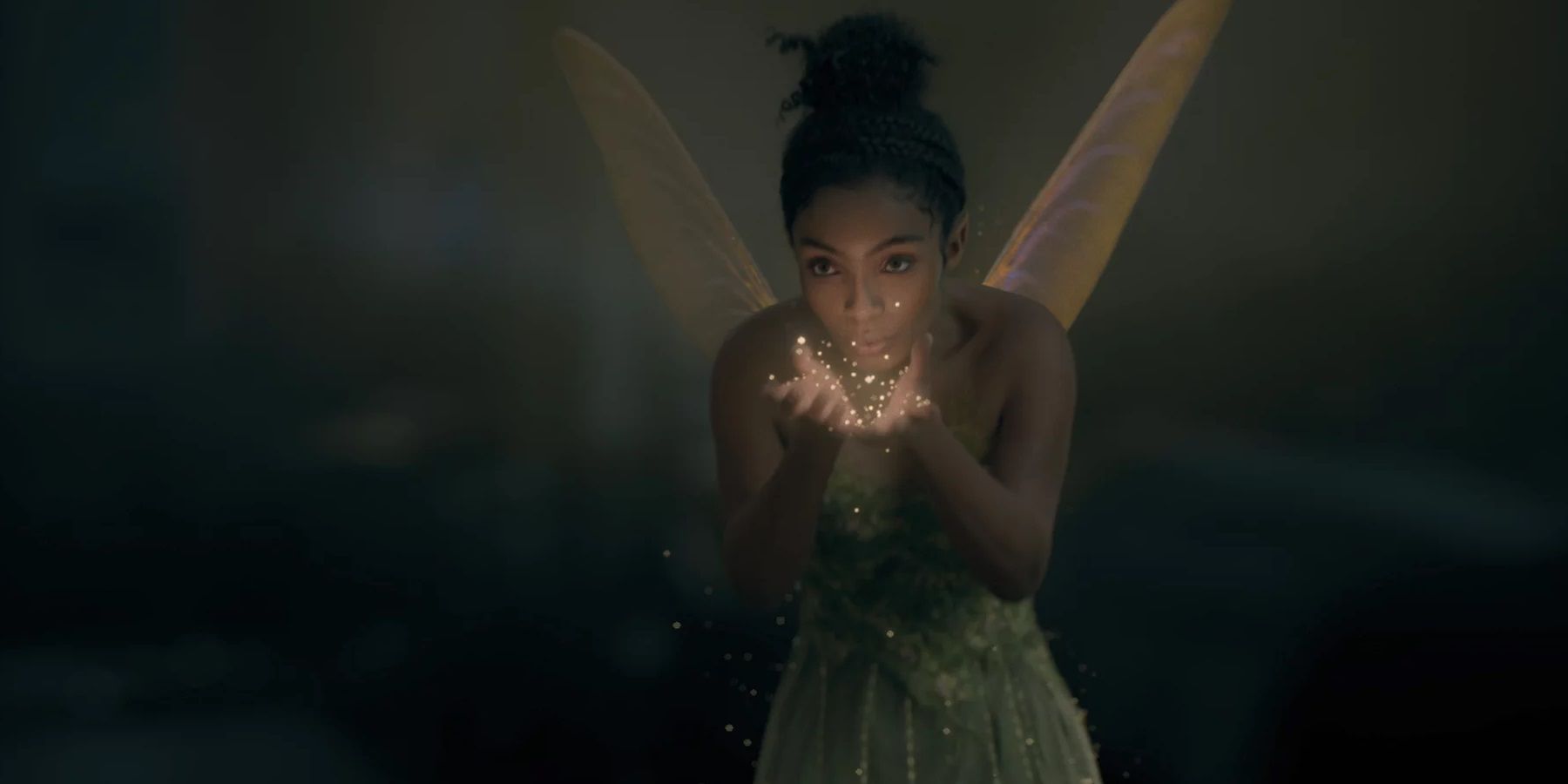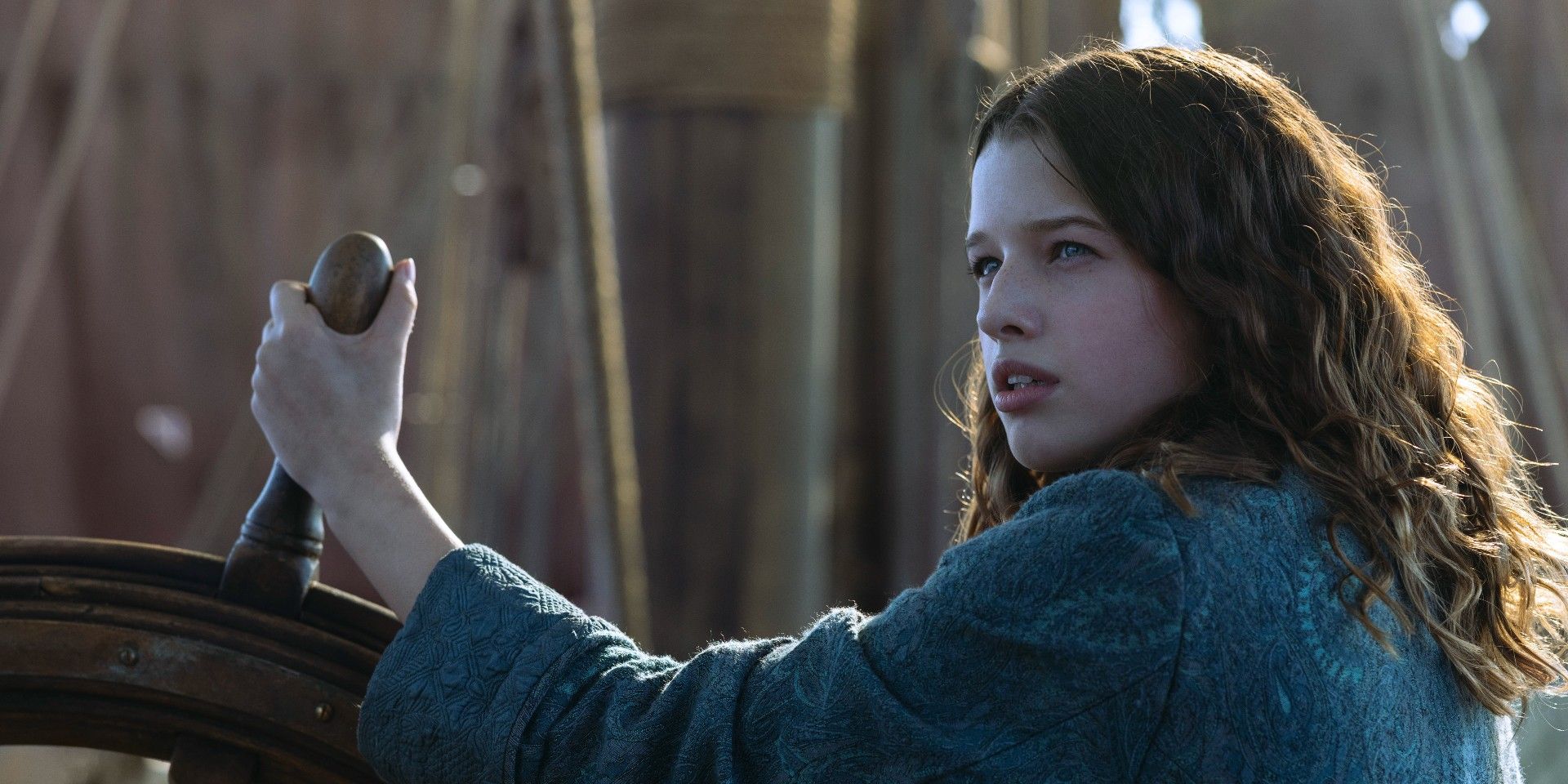Warning: the following contains spoilers from the film Peter Pan & Wendy.
Disney's original 1953 animated Peter Pan has some outdated and offensive aspects, problems that were corrected in the new live-action Peter Pan & Wendy. Like many of the old animated Disney films on Disney Plus, the streaming platform gave Peter Pan a warning message at the beginning because of some of its offensive messages. The film has faced a lot of criticism in the decades since its release for its racist and sexist themes. 70 years after Disney premiered the animated Peter Pan, the new film had a lot of updates to make in order to make the movie suitable for the modern audience.
Available To Stream On Disney+
Peter Pan & Wendy also corrected some plot holes, giving Peter Pan and Captain Hook their own backstories. In the new Peter Pan, Peter used to live in Wendy's home, but he ran away to Neverland and never came back. Hook's backstory links him to Peter as they were once best friends, and Hook was an original Lost Boy. While the backstories add more depth to the characters, the most important changes were the ones made to characters like Tiger Lily, Tinker Bell, and Wendy. The changes made the film more enjoyable as the original Peter Pan is painful to watch with all its problematic elements.
4 Peter Pan & Wendy Has More Cast Diversity
The original Peter Pan featured Tiger Lily and her Native American tribe but was otherwise all white characters. Disney and Hollywood itself still have a long way to go when it comes to diversity, but the film has made massive progress since the original Peter Pan in 1953. In Peter Pan & Wendy, Peter is portrayed by British actor Alexander Molony. Molony's exact heritage is unknown, but he is of mixed ethnicity. The actor looks much different than the original Peter Pan, who was a white boy with red hair, and Molony embodied the character's energy flawlessly.
Peter Pan & Wendy also reimagined Tinker Bell with black-ish and Grown-ish actress Yara Shahidi playing the fairy. Disney has had an issue with casting Black characters for decades, finally creating its first Black Disney Princess Tiana in 2009's The Princess and the Frog, so seeing Shahidi as Tinker Bell was refreshing. The actress is of African American, Choctaw, and Iranian heritage. Her version of Tinker Bell has a lot more depth than the original, and Shahidi shines as Peter's beloved sidekick.
The film also adds gender diversity by replacing the Lost Boys with Lost Boys and Girls. Twin sisters Kelsey and Skyler Yates and Kazakhstan-born actress Diana Tsoy play Lost Girls. However, the film made history with one of its Lost Boys, casting Noah Matthews Matofsky and Slightly, the leader of the pack. With his role in Peter Pan & Wendy, the 15-year-old actor became the first actor with Down Syndrome to land a major role in a Disney film.
3 Peter Pan & Wendy Fixes Tiger Lily's Story
The most offensive aspect of the original Peter Pan is the film's portrayal of Native American culture. The original film mocks Native Americans, portraying them as stereotypes and caricatures while also showing the white characters culturally appropriate the native tribes by wearing their headdresses. The worst part, however, was the highly offensive song "What Makes the Red Man Red," which was entirely omitted from the new film. The 2015 film Pan made matters worse, casting white actress Rooney Mara as Tiger Lily, completely whitewashing the character and erasing her heritage. The actress has since admitted she regrets taking the role.
Luckily, Peter Pan & Wendy gives Tiger Lily the story she deserves. The character is portrayed by indigenous actress Alyssa Wapanatahk. Throughout the film, Tiger Lily speaks the actress' native Cree with her tribe and has a more prominent role than in the animated film. Tiger Lily is more heroic and is the one to save Peter when he falls several stories seemingly to his death. The character also participates in the fight with the pirates at the end of the film, helping to defeat Captain Hook.
2 Peter Pan & Wendy Gives Tinker Bell A Voice
The original Peter Pan's portrayal of Tinker Bell was questionable and seemingly inappropriate at some points in the film. Tinker Bell was extremely jealous of Wendy because she was stealing away attention from Peter. The worst part was Tinker Bell didn't speak and could only communicate with Peter through her body language. Peter didn't seem to mind as he proclaimed in one scene that women talk too much. The storyline perpetuates the idea women's voices don't matter and that it's their appearances that are important.
Peter Pan & Wendy put an end to this idea by giving Tinker Bell a voice. At the beginning of the film, Peter tells Wendy that he can hear what Tinker Bell says, and the only reason she can't is that she hasn't learned to understand fairies yet. Later on, Wendy shows compassion to Tinker Bell. While she still can't hear her, she realizes Peter doesn't actually listen to Tinker Bell, making it hard for her to truly feel heard and understood. By the ending of Peter Pan & Wendy, Wendy can hear Tinker Bell speak, and the fairy thanks her for hearing her in a way Peter can't. The scene erases the original outdated competitive dynamic between the two and instead bonds them together over shared life experiences.
1 Wendy Is A More Prominent Character
The film is called Peter Pan & Wendy for a reason. The young character has a much more prominent role than she does in the original animated movie, which somewhat sidelined her as a damsel-in-distress. But Peter Pan & Wendy's Wendy is the emotional core of the movie, compassionate and empathetic in a way Peter is not. She understands and empowers Tinker Bell. She also helps the other children understand why growing up is a good thing and not something to fear like Peter tries to make them think it is.
Another significant scene is when Wendy is talking about her mother and mentions that she's not sure if she wants to be a mother. In 1953, when the original animated movie was released, the idea that a woman might not want to have kids of her own would not come up in society, let alone in a Disney film. The change adds depth to Wendy and shows women and girls sometimes have greater ambitions than starting families. Wendy is a much stronger character in Peter Pan & Wendy, and her changes along with the others make David Lowery's version of the film a perfect modern retelling.

